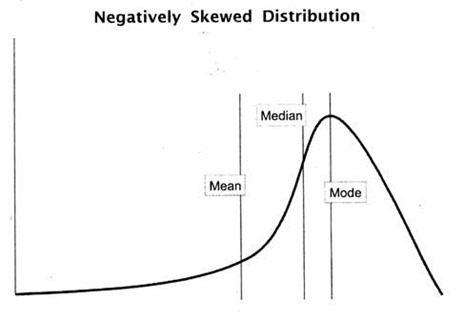What is Production Function ?
Functional relationship between inputs and output for a given state of technology.
Why does the minimum point of AC curve falls towards right of the AVC curve ?
AC continues to fall due to decreasing AFC even after AVC starts rising.
What is the relationship between the market price and the average revenue of a price-taking firm ?
The market price is equal to average revenue .
Why MP curve cuts AP at its maximum point ?
Can AP rise when MP starts declining? Answer with diagram.
 Ans. Yes, AP can rise when MP starts declining. It can happen as long as falling MP is more than AP. However, when MP becomes equal to AP, then further decline in MP will also reduce the AP.
Ans. Yes, AP can rise when MP starts declining. It can happen as long as falling MP is more than AP. However, when MP becomes equal to AP, then further decline in MP will also reduce the AP.
“The gap between AC and AVC keeps on decreasing with rise in output, but they never meet each other”. Comment.
The given statement is correct. The gap between AC and AVC keeps on decreasing because the difference between them is AFC, which falls with increase in output. However, AFC can never be zero. Therefore, AC and AVC can never meet each other.
What would be shape of demand curve, so that TR curve is:
(a) a positively sloped straight line passing through the origin;
(b) a horizontal line?
(a) Demand curve or AR curve will be a horizontal straight line parallel to the X-axis because positively sloped straight line TR curve passing through the origin indicates that price (orAR) remains constant at all levels of output.
(b) Demand curve or AR curve will slope downwards from left to right because horizontal TR indicates that TR remains same at levels of output. It is possible only when price (or AR) falls with rise in output.
Why MP curve cuts AP at its maximum point ?
AP rises MP is more than AP when AP falls MP is less than AP but when AP is constant and at its max point MP is equal to AP.
What is the relationship between TC/TVC and MC ?
When TVC/TC increases at a diminishing rate, MC declines.
▪ When TVC/TC increases at an increasing rate, MC rises.
▪ When TC/TVC stops increasing at diminishing rates, MC at its lowest point.
Why AR curve under monopolistic competition is more elastic than AR curve under monopoly?
AR curve under both the markets slope downwards. However, AR curve under monopolistic competition is more elastic as compared to AR curve under monopoly because of presence of close substitutes. AR curve is less elastic in monopoly because of no close substitutes.
All the inputs used in the production of a good are increased simultaneously and in the same proportion. What are its possible effects on Total Product? Explain with the help of a numerical example.
The behavior of total output in the long run period is technically termed as Returns to Scale. There are three possibilities:
1. Increasing Returns to Scale (IRS):- It occurs when a given proportionate increase in all factor inputs (in some constant ratio) causes a proportionately greater increase in output. For example: Suppose there are only two inputs, labor (L) and Capital (K). Suppose 1K + IL produces 100 units and 2K + 2Lproduce 250 units. Input rises by 100% while the output rises by 150%.
2. Constant Returns to Scale (CRS):- It occurs when a given proportionate increase in all factor inputs causes a proportionately equal increase in output. At this stage, economies of scale are counterbalanced by diseconomies of scale. For example, suppose 1K+1L produces 100 units and 2K+2L produces 200 units, both inputs and TP rise in the same proportion.
3. Diminishing Returns to Scale (DRS):- It occurs when a given proportionate increase in all factor inputs causes a proportionately lesser increase in output. For example, Suppose 1K+1L produces 100 units and 2K+2L produces 190 units, inputs rise by 100% while the output rise by 90%.
Classify the following as fixed cost and variable cost:
(i) Salary to manager of the company.
(ii) Wages to casual labour.
(iii) Payment of insurance premium for insurance of factory.
(iv) Payment for raw material.
(v) Payment of rent of Postpaid connection of Mobile Phone.
(vi) Interest on loan taken from ICICI.
(vii) Electricity charges beyond the minimum rent.
(viii) Payment of rent of the factory building to the landlord.
(ix) Commission to production manager on the basis of number of units produced.
(x) Payment of fuel used in machines.
Fixed Cost: (i), (iii), (v), (vi), (viii)
Variable Cost: (ii), (iv), (vii), (ix). (x)
What is the relationship between TR and MR when the price falls with rising in output with diagram ? Also, give the important observation observed in this relationship.
 (i) As long as MR is positive, TR increases(ii) When MR is zero , TR is at its maximum point and is constant
(i) As long as MR is positive, TR increases(ii) When MR is zero , TR is at its maximum point and is constant
(iii) When MR becomes negatives, TR starts falling.
Important Observation:
1 - zero and negative MR MR can be zero and even negative when price falls with rise in output:
MR can be zero and negative when TR remains the same with rise in output
2 - TR = summation MR but TC is not equal to summation MR:
TR can be calculated by adding up revenue from each additional sale but TC is the summation of TVC and TFC and since MC is not affected by these two it cannot be calculated.